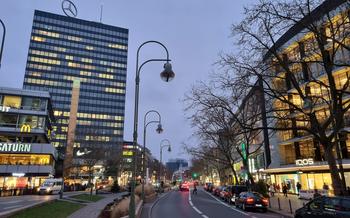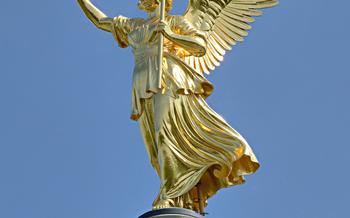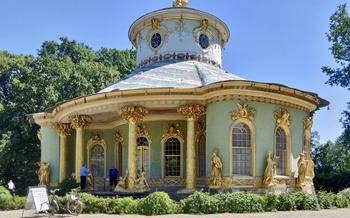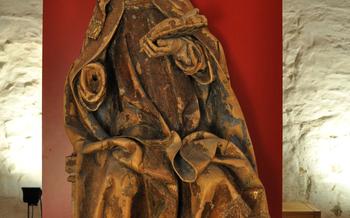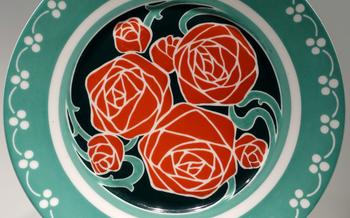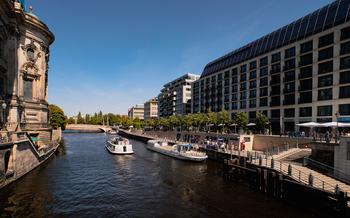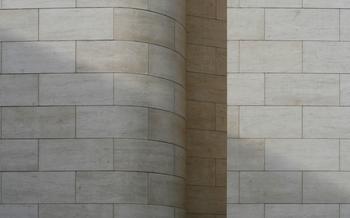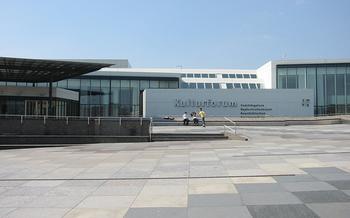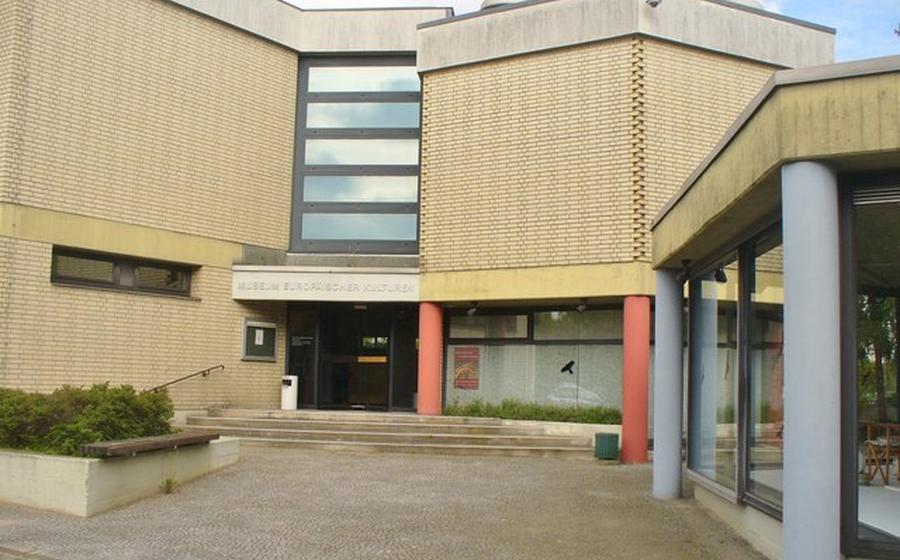
The Museum of European Cultures
- The Museum of European Cultures: Unveiling the Tapestry of Human Diversity
- Permanent Exhibitions
- Temporary Exhibitions
- Educational Programs
- Research and Publications
- Community Engagement
- Accessibility
- Museum Shop
- Café and Restaurant
- Guided Tours
- Admission and Hours:
- Getting There
- Nearby Attractions
- Tips for Visitors
- Insider Tip:
The Museum of European Cultures: Unveiling the Tapestry of Human Diversity
Nestled in the vibrant heart of Berlin, the Museum of European Cultures stands as a testament to the rich tapestry of human diversity that weaves the fabric of our world. Founded in 1999, this remarkable institution has evolved into a cultural hub, fostering intercultural dialogue and promoting a deeper understanding of Europe's intricate cultural heritage.
The museum's striking architectural design, a fusion of postmodern and contemporary elements, mirrors its mission to bridge the past and the present. Its unique structure, featuring a series of interconnected cubes, symbolizes the interconnectedness of European cultures and their ongoing dialogue.
The museum's mission to promote intercultural understanding and dialogue permeates every aspect of its existence. Through its exhibitions, educational programs, and research initiatives, the museum strives to challenge stereotypes, foster empathy, and create a more inclusive and tolerant society.
Permanent Exhibitions
The Museum of European Cultures houses a remarkable collection of artifacts, artworks, and cultural objects from across Europe, spanning various historical periods and cultural contexts. The permanent exhibitions are designed to showcase this diverse heritage and provide visitors with a comprehensive understanding of European culture.
One of the highlights of the museum is the exhibition titled "From the Stone Age to the Middle Ages." This exhibition takes visitors on a journey through the early history of Europe, showcasing archaeological finds, tools, weapons, and other artifacts that shed light on the lives of our ancestors. Visitors can explore the development of human societies, from the hunter-gatherer communities of the Stone Age to the rise of complex civilizations in the Bronze and Iron Ages.
Another captivating exhibition is "European Encounters," which explores the interactions between European cultures and those of other parts of the world. Through a rich display of objects, including trade goods, travel accounts, and works of art, this exhibition showcases the cultural exchanges and mutual influences that have shaped European identity throughout history. Visitors can learn about the impact of European exploration and colonialism on indigenous cultures and the subsequent processes of cultural assimilation and resistance.
The museum also features a permanent exhibition titled "Contemporary Europe," which examines the diverse cultural expressions and social challenges of modern Europe. This exhibition showcases contemporary art, design, fashion, and photography, exploring themes such as identity, migration, globalization, and the search for a common European identity in the 21st century.
Temporary Exhibitions
The Museum of European Cultures presents a dynamic program of temporary exhibitions that complement and expand upon its permanent collection. These exhibitions explore a wide range of themes related to European culture, history, and society, often delving into specific regions, communities, or historical periods. Past exhibitions have showcased topics such as the art and culture of the Roma people, the history of migration in Europe, and the impact of colonialism on European identities.
Temporary exhibitions at the museum offer visitors the opportunity to engage with timely and relevant issues, gain new perspectives on European culture, and deepen their understanding of the complex tapestry of European history. They also provide a platform for emerging artists, scholars, and cultural practitioners to share their work with a wider audience.
By presenting temporary exhibitions, the Museum of European Cultures fulfills its mission to promote intercultural dialogue and understanding. These exhibitions encourage visitors to critically examine their own cultural biases, challenge stereotypes, and appreciate the diversity of European cultures. They also contribute to the ongoing conversation about the future of Europe and its place in the global community.
Educational Programs
The Museum of European Cultures offers a comprehensive range of educational programs designed to promote intercultural learning and global citizenship. These programs are tailored to diverse audiences, including school groups, families, and adults, and aim to foster critical thinking, empathy, and cultural understanding.
A highlight of the museum's educational offerings is the "Cultures in Dialogue" program, which invites students to engage with diverse cultural perspectives through interactive workshops and guided tours. The program encourages students to explore the museum's collection, learn about different cultures, and develop skills for intercultural communication and cooperation.
Families can participate in the "Family Sundays" program, which features storytelling sessions, hands-on activities, and family-friendly tours. These programs provide a fun and engaging way for families to learn about different cultures together and create lasting memories.
For adults, the museum offers a variety of lectures, workshops, and seminars on topics related to European culture, history, and contemporary issues. These programs are led by experts in their respective fields and provide opportunities for participants to engage in thought-provoking discussions and gain new insights into European culture.
Through its educational programs, the Museum of European Cultures plays a vital role in promoting cultural understanding, fostering dialogue, and inspiring a new generation of global citizens.
Research and Publications
The Museum of European Cultures is renowned for its scholarly research and publications, which contribute significantly to the academic study of European culture and history. The museum houses a specialized library with an extensive collection of books, journals, and archival materials, providing researchers with access to a wealth of resources for their studies. The museum also collaborates with universities and research institutions to conduct joint projects and foster academic exchange.
The museum's publications program is equally impressive, with a range of books, journals, and online resources that disseminate research findings and promote intercultural dialogue. These publications cover a wide spectrum of topics, including European art, history, anthropology, and contemporary social issues. The museum's flagship publication is the journal "Europäische Ethnologie," which features scholarly articles, essays, and reviews on European cultural studies.
The museum's research and publications play a crucial role in advancing knowledge and understanding of European cultures. By engaging in scholarly inquiry and disseminating research findings, the museum contributes to the preservation and promotion of cultural heritage, fostering a deeper appreciation for the diversity and interconnectedness of European societies.
Community Engagement
The Museum of European Cultures actively engages with the local community to foster intercultural understanding and dialogue. The museum collaborates with community organizations, cultural institutions, and schools to create a sense of belonging and inclusivity. Through partnerships and joint initiatives, the museum aims to make its resources and exhibitions accessible to a diverse audience. Community events, festivals, and outreach programs are organized to celebrate cultural diversity, promote cultural exchange, and encourage participation from all members of society. The museum's commitment to community engagement ensures that its mission of promoting intercultural understanding extends beyond its walls and into the broader Berlin community.
Accessibility
The Museum of European Cultures is committed to ensuring that all visitors have an enjoyable and accessible experience. The museum is fully accessible for visitors with disabilities, with wheelchair ramps, elevators, and accessible restrooms throughout the building. Visitors with visual impairments can request audio guides or braille brochures, and visitors with hearing impairments can request sign language interpreters. The museum also offers a variety of programs and events designed for visitors with disabilities, such as sensory-friendly tours and workshops. The museum's staff is always happy to assist visitors with any accessibility needs they may have, ensuring that everyone can fully experience and appreciate the museum's diverse collections and exhibitions.
Museum Shop
The Museum of European Cultures' shop is a treasure trove of unique items that reflect the museum's mission to promote intercultural understanding and dialogue. Visitors can browse a wide range of products, including books, souvenirs, and cultural artifacts from around the world. The shop offers a carefully curated selection of books on European culture, history, and art, as well as a variety of educational materials for children. Visitors can also find a range of souvenirs, such as postcards, magnets, and keychains, featuring the museum's logo and iconic exhibits.
The museum shop also offers a selection of cultural artifacts, such as textiles, ceramics, and jewelry, that represent the diverse cultures of Europe. These items are ethically sourced and often handmade by artisans from different countries. By purchasing these products, visitors can support the museum's mission and contribute to the preservation of cultural heritage.
The museum shop is located on the ground floor of the museum and is open during the museum's regular hours of operation. Visitors are encouraged to visit the shop to find unique and meaningful gifts for themselves or loved ones, while also supporting the museum's important work.
Café and Restaurant
The Museum of European Cultures houses a delightful café and restaurant that offers a culinary journey through Europe. The café, located in the museum's atrium, serves a variety of beverages, including freshly brewed coffee, teas, and juices, as well as a selection of pastries, cakes, and sandwiches. The restaurant, situated on the museum's top floor, provides a more formal dining experience with stunning views of Berlin. The menu features a range of European dishes, showcasing the diverse culinary traditions of the continent. The chefs use fresh, seasonal ingredients, sourced locally whenever possible, to create delicious and authentic meals. The café and restaurant are committed to sustainability and strive to minimize their environmental impact through responsible sourcing and waste reduction practices. The museum's café and restaurant are popular destinations for both museum visitors and locals alike, offering a unique opportunity to savor the flavors of Europe while immersing oneself in the museum's cultural offerings.
Guided Tours
The Museum of European Cultures offers guided tours as an immersive and informative way to explore its exhibitions. These tours are led by expert guides who provide insights into the museum's collection and the diverse cultures represented. Visitors can choose from a variety of themed tours that focus on specific regions, historical periods, or cultural practices.
Thematic tours include "Cultures of Europe," which takes visitors on a journey through different European regions and their unique traditions; "Encounters with the Other," which explores the museum's collection of artifacts from non-European cultures; and "Art and Identity," which examines the role of art in shaping cultural identities.
Tours are offered in multiple languages, including English, German, and Spanish, to cater to a diverse audience. Visitors can book guided tours in advance or on the day of their visit, subject to availability. Group tours for schools and other organizations can also be arranged upon request.
The museum's guided tours are a valuable addition to the overall visitor experience. They offer a deeper understanding of the museum's collection and the cultural diversity it represents, making the visit more engaging and memorable.
Admission and Hours:
Visiting the Museum of European Cultures is an enriching experience that won't cost you a fortune. The admission fee is set at a reasonable €8, with discounted rates of €4 for students, seniors, and visitors with disabilities. Families with children can also enjoy a special family ticket priced at €1
The museum's doors are open from Tuesday to Sunday, allowing you to plan your visit at your convenience. During the week, it welcomes visitors from 10 am to 6 pm, while on weekends, it extends its hours from 11 am to 6 pm.
To avoid any inconvenience, it's advisable to purchase your tickets in advance, especially if you're visiting during peak tourist season. The museum's website offers a user-friendly online ticketing system where you can select your preferred date and time slot. Alternatively, you can purchase tickets on-site, but be prepared to queue during busy periods.
Remember, if you have a valid Berlin Museum Pass, you'll enjoy free admission to the Museum of European Cultures, along with many other museums in the city. It's an excellent option for culture enthusiasts who plan to explore multiple museums during their stay in Berlin.
Getting There
Reaching the Museum of European Cultures in Berlin is a breeze, thanks to the city's efficient public transportation system. Hop on the U-Bahn (subway) and alight at the Dahlem-Dorf station, which is right outside the museum's doorstep. Alternatively, take bus lines 115 or 386 and get off at the Clayallee/Thielplatz stop, a short walk from the museum. For those arriving by car, there's ample parking available in the vicinity, ensuring a hassle-free visit.
Nearby Attractions
The Museum of European Cultures is surrounded by a wealth of other cultural attractions and landmarks, making it an ideal starting point for exploring Berlin's rich history and vibrant arts scene. Just a short walk away, visitors can find the Dahlem Museums Complex, which houses a cluster of museums dedicated to art, ethnography, and natural history. The Botanical Garden and Botanical Museum Berlin, located adjacent to the museum, offer a tranquil oasis with over 20,000 plant species from around the world.
For those interested in modern art, the Brücke Museum, showcasing the works of the Brücke expressionist group, is a must-visit. The Jagdschloss Grunewald, a former hunting lodge, now houses a museum dedicated to the history of hunting and forestry. The nearby Grunewald Forest, with its idyllic lakes and hiking trails, provides a refreshing escape from the city's hustle and bustle.
The Museum of European Cultures is also conveniently located near several shopping and dining options. The Kurfürstendamm, Berlin's famous shopping boulevard, is just a short bus or U-Bahn ride away. Visitors can find everything from luxury boutiques to international cuisine along this vibrant street. The nearby Schloßstraße is another popular shopping destination, offering a mix of high-end fashion stores and cozy cafés.
Tips for Visitors
To make the most of your visit to the Museum of European Cultures, consider these practical tips:
-
Plan your visit: Check the museum's website for information on current exhibitions, events, and special programs. Plan your visit accordingly to ensure you have enough time to explore the museum's highlights.
-
Avoid crowds: If you prefer a more tranquil experience, visit the museum during weekdays or during the morning hours on weekends. This will allow you to explore the exhibitions at your own pace and engage with the museum staff without long queues.
-
Don't miss the highlights: While the museum offers a diverse range of exhibitions, there are a few must-see highlights that you shouldn't miss. These include the "European Encounters" exhibition, which explores the history of European migration and cultural exchange, and the "Sound of Europe" exhibition, which showcases the diversity of European musical traditions.
-
Take advantage of the guided tours: The museum offers guided tours in various languages, providing a deeper insight into the exhibitions and their themes. These tours are led by experienced museum guides who can answer your questions and share their knowledge.
-
Engage with the educational programs: The museum offers a variety of educational programs, including workshops, lectures, and family activities. These programs are designed to foster intercultural understanding and global citizenship, providing visitors with opportunities to learn and engage with different cultures.
Insider Tip:
Peek behind the scenes of the museum's restoration workshop, where skilled conservators meticulously restore and preserve artifacts from around the world. Discover the fascinating journey of these objects, from their discovery to their display in the museum's exhibitions. Witness the transformation of fragile artifacts into vibrant cultural treasures, brought back to life by the hands of dedicated experts. This hidden gem offers a glimpse into the lesser-known world of museum conservation and the tireless efforts that go into preserving our cultural heritage.
